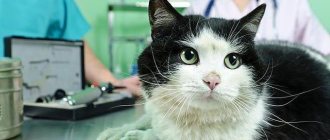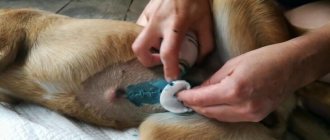Announcements on NN.RU - Home
To add an advert
solar power plants solar panels
We installed a solar power station, sawed an aluminum corner, soldered the solar plates, filled it with special liquid, connected the receiver...
Network card d-link dfe-520tx
D-link DFE-520TX network card is in excellent condition. Interface: PCI Available types of Ethernet network connections: 1 pcs Performance... Price: 200 rub.
Refrigerator repair. Private master
We specialize in repairing refrigerators and freezers. Every day we travel around Nizhny Novgorod and the region and fix what needs to be done... Price: 150 rubles.
Recirculator - air irradiator
I am selling a recirculator-irradiator for disinfecting indoor air in the presence of people and we offer it for use in your... Price: 9,000 rubles.
“The floor was on fire, but the firefighters could not get there”: 42 people were evacuated from the high-rise to the Aquamarine residential complex
In the Nizhny Novgorod region, the driver of a car fell into a coma after a collision with a KAMAZ
Kids time. Let's help a child make his dream come true
Every child can become outstanding, everyone is capable of fulfilling their dreams. The main thing is to correctly determine what he likes, and...
Fees for major repairs in the Nizhny Novgorod region will increase from 2021
This is interesting: The smartest cat breeds
What is the difference between the two operations?
Castration and sterilization are carried out to stop the reproductive system. Operations should not be confused. The results of the cat’s behavior as a result of the intervention and the impact on the organs may be different. An important factor in a cat's need for a cat is often the way the intervention is delivered. During castration, the organs of the reproductive system are removed partially or completely. As a result, the female's desire for motherhood is excluded. A properly performed operation does not provoke such a side effect, because the reproductive apparatus is free of the ovaries and uterus.
During sterilization, the fallopian tubes are ligated; the organs are not removed. That's why a sterilized cat asks for a cat. The pet is able to walk, and the instinct for procreation is preserved. The only positive aspect is that she will stop getting pregnant. It is this kind of intervention that can contribute to the case when a cat screams after sterilization, walks and attracts the cat. Inflammation of the reproductive organs is also possible.
Poorly performed sterilization: consequences
One of the most obvious explanations for the fact that a sterilized cat began to walk again is that the animal was not properly sterilized. The pet is walking with this turn of events, since veterinarians might not have removed a piece of the ovary or even the whole ovary at all during sterilization. Then, in the first month after sterilization, she resumes hunting again and then walks the same way as before the operation. This case is quite rare and, if detected, requires immediate extensive abdominal surgery. Laparoscopy is not used in this case, since its results are ineffective for a pet that has already been sterilized once.
Why does the female raise her butt and demand a cat?
Poorly performed surgery
In this situation, the solution to the problem will be to repeat the operation on the animal.
The cause of an incorrectly performed operation cannot be ruled out. The remaining ovarian tissue can regenerate and grow back. This process is called ovarioreminant syndrome - an uncommon occurrence that occurs due to the unprofessionalism of the veterinarian. In these cases, the cat meows after sterilization and can accept the cat. She requires a repeat ectomy of the formed ovaries and remaining tissue.
Physiology: hormonal changes
It is possible that the cat raises the back of its body and walks due to the functioning of the hormonal system even before the intervention. Sometimes the female screams again if castration is carried out at the age of over 1 year, especially when lambing has already occurred. In such a situation, the cat may want a cat for up to 12 months. There may also be an excess of hormones produced by the pituitary gland, adrenal glands or hypothalamus.
Psychological reasons
A successfully carried out procedure leads to a solution to the problem of missed trays.
Thanks to the ectomy of the reproductive organs, the female does not suffer from constant hormonal changes, does not want a cat and stops screaming. The pet becomes calmer. After castration, cats are less aggressive and conflict-free, and regularly go to the litter box. The instinct to procreate after removal of the reproductive organs is absent, which means the female does not require a male. If a kitten is neutered before her first heat, she will not meow.
Why does a cat ask for a cat after sterilization?
The instinctive behavior of cats during estrus is due to the influence of hormones, so it is not always possible to expect it to stop after sterilization. There are different types of surgeries in which only part of the reproductive system (uterus or ovaries) is removed. When tubal ligation occurs, all organs retain their functions.
Before sterilization, it is necessary to determine whether the owner wants to rid the domestic cat of sexual desire or just wants to prevent the appearance of unnecessary offspring if the pets walk on their own.
The following types of sterilization are carried out in veterinary clinics:
- Removal of only the ovaries or all reproductive organs at once. During an oophorectomy or ovariohysterectomy, the veterinarian removes the ovaries, which produce some of the hormones that cause the cat to show signs of heat.
- Hysterectomy. Only the uterus is removed, the ovaries remain. The cat is unable to become pregnant, but the ovarian hormones continue to be produced.
- Tubal occlusion. When the fallopian tubes are ligated or cut, both the uterus and ovaries remain in their physiological places. The cat loses the ability to produce offspring, but its hormonal levels continue to change in accordance with the natural cycle.
To avoid hormonal surges and sexual heat in domestic cats, you need to choose surgery that involves removing the ovaries. With all other types of intervention, this organ will continue to produce hormones and ensure the animal’s sexual behavior.
Sterilization or castration: which is better to choose?
An ectomy is a serious process, but it has many benefits. Thanks to the procedure of removing the reproductive organs, the female has no surges in hormones. The cat becomes calmer after surgery. The process has a beneficial effect on the health and condition of the pets; they do not want to go for walks. Extomy of the reproductive organs eliminates the likelihood of the formation of inflammatory processes in the ovaries and uterus, which are dangerous for the animal and can be fatal.
Veterinarians consider sterilization a pointless operation, because the organs continue to produce hormones. The cat is still equally bothered by hormonal surges, which manifest themselves as follows:
After this procedure, the animal will still periodically meow and look for a partner.
- The animal walks and continues to meow.
- The pet is lethargic and apathetic, refuses to eat.
The female can ignore the tray during estrus and is capable of marking her territory. Moreover, the ovaries and uterus can become inflamed when females are walking, without gestation, which should end estrus. This can even lead to the formation of cancer in the reproductive organs. Therefore, professionals recommend castrating the animal to avoid side effects, additional stress, the likelihood of inflammatory processes and even oncology.
What to do?
If your animal continues to exhibit this behavior, you should consult a doctor.
Only a veterinarian, after examining the animal, will be able to make a preliminary diagnosis, and relying on test results to confirm it. After the disease has been diagnosed, it is possible to prescribe the optimal treatment process, which will be suitable on an individual basis. The use of sedative hormones is contraindicated. This may contribute to the formation of cancerous tumors.
- After removal of the reproductive organs, the animal is prone to weight gain.
- Excess energy interferes with calm.
If overexcited, the veterinarian suggests placing the cat separately. A minimal amount of stress will speed up the onset of peace and help avoid drug therapy. Often, in the postoperative period, the female recovers quickly. On day 2 the animal is already active. If the cat starts screaming after the intervention, the veterinarian prescribes Depogeston or Covinavet, Gestrenol or Libidomin.
What to do if the cat continues to walk after sterilization?
The owner has the following options for dealing with the pet’s wandering behavior despite the surgery:
- You need to be patient and wait until the concentration of hormones that were produced before sterilization drops.
- Carry out a repeat operation. In most cases, it is financed by the surgeon who performed the first one. However, it should be noted that all anesthesia drugs have side effects.
- If estrus occurs, use medications to regulate sexual heat, which will be prescribed by a veterinarian.
Preparations for regulating sexual heat in cats
If a sterilized cat develops heat and produces characteristic meowing, rolling on the floor, and spreading puddles across the floor, phytosterol-based calming medications are used.
In their structure, the substances contained in biological additives resemble sex hormones. The cat develops the feeling that mating has occurred and she calms down.
The advantages of the drugs are their harmlessness and mild action. The disadvantage is that they must be given several times a day for several days. The following herbal sedatives are in demand:
- FITEX is given an hour before meals or along with food, 3-5 drops per cat with food or treat 3 times a day. During the period of taking the biological supplement, the pet is transferred to three meals a day. The course of taking the drug is 15-30 days. If necessary, treatment is repeated. In addition to correcting sexual behavior, drops are used to relieve stress.
- Kot Bayun tablets are a dried extract of medicinal herbs. Give 3-4 times a day, 20 minutes before and an hour after feeding, 2 pills. The course of treatment is 5-7 days. It is recommended to use it monthly until the problem is eliminated.
- Kot Bayun infusion. It is a herbal tea in bottles. The procedure for taking it is the same. as when using tablets. A single dosage is half a teaspoon.
Be sure to read:
When can you bathe a cat after castration: what is it for, what products to use, how to wash
An alternative to herbal remedies is a hormonal remedy Sex barrier. An important difference from other drugs is the combination of two hormones. They enhance each other’s effects, which allows them to be used in low concentrations that are safe for health. The drugs are produced in modifications for cats, females, males and females.
A pet should not be given medicine intended for cats, because they contain too high a concentration of active ingredients. If the cat is in heat, give 4 drops per day for 3-5 days. To prevent the onset of estrus, 4 drops are administered to the cat once every 2 weeks.
Some cat lovers prefer to use tablets. The effect of 1 pill is equivalent to 4 drops. The application procedure is the same as when using drops.
This is interesting: Ways to accustom a kitten to a litter tray
Reasons for estrus after sterilization
The most common reasons are:
- Residues of sex hormones in the blood if sterilization was carried out during the peak of sexual activity and prolonged estrus. The attenuation of hormonal levels after surgery occurs gradually. Sexual heat occurs by inertia (the condition is also called “inertial estrus”).
- Syndrome of reminiscent ovary or preserved ovarian tissue . It is enough that at least one cell of glandular tissue remains in the body after removal for a new one, similar to an ovary, to grow from it, followed by the production of sex hormones. This reason relates more to a poorly performed operation by a surgeon, when the whole ovary or part of it remains in the body.
Rare reasons why a cat goes into heat after sterilization:
Hormonal duplication
The essence of the phenomenon is that after removal of the ovaries, the function of producing sex hormones is taken over by organs that are not related to the reproductive system. These include hyperfunction of the adrenal glands, disorders of the pituitary gland and hypothalamus. In veterinary medicine, rare cases of dysfunction of the thyroid gland, accompanied by the release of sex hormones, have also been reported. Moreover, it is worth noting that these disorders occur in both sterilized and non-sterilized animals. This means that the sterilization operation is not a catalyst for conditions; on the contrary, it allows us to identify these pathologies that are not noticed against the general hormonal background.
Irregular and varying duration of estrus after sterilization usually also indicate hormonal duplication. More often occurs during operations on middle-aged animals (from 5 to 8 years).
For this reason, spaying is recommended after a cat's first heat. Ideally, of course, if spaying is carried out before the first heat. However, it is very difficult to predict when it will happen, and in order not to run into surgery during the peak of sexual activity, you can wait until the end of the first cycle.
Tumors
Hormone-dependent tumors can produce sex hormones in conjunction with corresponding sexual behavior. Do cats with such tumors walk after surgery? Yes, they are walking.
Ectopic ovarian tissue syndrome
An extremely rare congenital pathology in which glandular tissue “grows” anywhere in the abdominal cavity and produces sex hormones. Of course, before sterilization, against a general hormonal background, you may not know about this “piece,” just as you may not see it during the operation. Only sexual activity after ovario(hystero)ectomy allows us to suspect abnormalities in health. In such cases, sterilization has absolutely no effect on the sexual behavior of the cat, meowing and the requirements of the partner for mating remain unchanged.
This is interesting: Sterilization of a cat during heat
Why does this happen?
There are some reasons that may contribute to the continuation of estrus after sterilization.
And owners don’t always need to worry about this.
Quite often, such a problem does not arise due to problems with the cat’s health, but there are cases when all the blame falls on the veterinarian.
What other cases are there?
In veterinary practice, there are a number of specific cases when the sex hormonal background of a sterilized individual was determined by diseases occurring in the thyroid gland. Aligning and adjusting the balance of hormones in this situation is not an easy task, which may include a number of stages:
- Exclusion of hormone-producing tumors;
- Chemical suppression of sex hormones.
Most often, the latter is performed by implanting a special capsule under the skin.
Heredity
A similar pathology forms in an animal even when it is in the womb.
Scientists call it ectopic ovarian tissue syndrome.
The problem is that during the formation of the ovaries, some tissue cells end up in another part of the animal’s body, and it is simply impossible to identify them in the formed and strengthened cat’s body.
Reference!
Such a hereditary predisposition is very rare.
Disease
The cat marks as if to spite its owner. They did everything to her: they scolded her, spanked her, and poked her nose. No, he doesn't understand. Runs away from the crime scene on half-bent legs, with blocked ears. But he continues to do his job.
Do not rush to scold your favorite. Perhaps the whole point is that the animal simply does not always have time to reach the tray. If a cat has cystitis or urolithiasis, punishment will not help. The animal must be treated; this is impossible to do at home. Therefore, you will have to take your pet, put it in a carrier and rush to the veterinarian. The faster, the better for everyone. Because only a specialist can determine the presence of diseases associated with the bladder.
Poor operation
A careless choice of the clinic and the doctor who performed the sterilization could lead to the fact that an inexperienced veterinarian did not remove all the ovaries. Even if part of the organ remains not removed, the production of hormones continues, and the cat may begin to ask for a cat.
Important!
To find out whether the doctor is at fault, you need to take the cat for tests and an ultrasound - these two types of diagnostics will accurately reveal the presence of remnant ovaries, which will confirm/refute the guess about a poor-quality operation.
To save the cat from the consequences of poor-quality sterilization, another operation will be required. This time you need to take your choice of doctor seriously.
Hormones
During the period from 2 weeks to 6-7 months after removal of the reproductive organs, the cat walks due to the presence of progesterone residues in the blood. Hormones that influence behavior are also produced by other organs: the pituitary gland and adrenal glands. The older the animal that was sterilized, the greater the likelihood of this outcome.
To solve the problem, you need to consult a veterinarian. To eliminate symptoms, the administration of a hormonal drug (Covinan, Depo-promone, etc.) is required. If you miss time, the cycle becomes permanent. But only a veterinarian can prescribe medicine and give an injection.
Increase or decrease in activity
There are animals that do not feel discomfort after surgery and continue to lead their usual lifestyle. Some cats become hyperactive. This behavior is highly undesirable at the recovery stage. We must prepare for such a turn of events in advance. You can add sedatives to the water.
It is recommended to prepare an isolated place for your pet, where she will be calm and comfortable.
Decreased activity is normal after surgery. The animal does not need to be disturbed. Some owners lift it and carry it - this cannot be done.
Signs that a cat is wandering
A cat in heat causes a lot of trouble to its owners. The average duration of a cat's heat is 5-7 days.
There are also temperamental individuals that can walk for 10-14 days every month. The first time a cat begins to ask for a male cat is at the age of 6 months, but this is too early for mating. The characteristic symptoms of estrus are immediately noticeable:
- friction of the pet against objects - often, for a long time;
- loud screams with inviting notes, often at night;
- more affectionate behavior with the owner and others;
- refusal of food (the cat may not even eat its favorite treats);
- frequent urination, especially if there is a cat nearby;
- when stroking the tail area, the animal protrudes its back part, twitches its tail, and bends its paws;
- clear fluid is discharged from the vagina.
Symptoms may vary between individuals. There are animals that walk almost unnoticed, and the owner finds out about the heat after pregnancy. But more often the first signs are pronounced.
Persistence of other behavioral traits that should have gone away
Each owner, when sending a cat for sterilization, pursues a specific goal. Such a goal could be:
- cessation of estrus;
- the cat stops yelling all day long;
- The cat stops marking its territory.
In some cases, this behavior may continue to manifest itself in pets.
For example, immediately after surgery, an animal may scream for a couple of months, since there are still “wandering” hormones in the body.
They can cause continued estrus for a short period of time after removal of the ovaries.
If the cat continues to scream, the type of surgery performed should be considered. For example, after the fallopian tubes are pulled, the female loses the opportunity to become pregnant, but the ovaries continue to produce hormones, and accordingly, the cat continues to scream. It is also worth making sure that the operation was successful.
Attention!
You just need to wait out the two-month period after sterilization - no need to give your cat pills that suppress estrus or panic. If the cat asks for a cat after 2 months after surgery, contact your veterinarian.
What is sterilization?
Sterilization is an abdominal operation to ligate the fallopian tubes. All the cat's reproductive organs are in place, but she cannot become pregnant. All of her internal female organs still work. Just as before, there are periodic changes in hormonal levels, which causes the animal to suffer and suffer from unfulfilled maternal instinct.
If a cat asks for a cat after sterilization, it means that she underwent just such an operation. There is no use for it, and many veterinarians recommend not to abuse animals - to do castration. Moreover, now there are gentle methods that are less traumatic than they were several years ago.
READ Feeding an English Cocker Spaniel
Primary instincts in animals are more developed than in humans. Sometimes they completely take over them, making their lives, including ours, unbearable. In order not to watch your beloved cat suffer, you should think about castration.
When deciding to visit the veterinarian, you need to remember that the cat asks for a cat after sterilization, only castration, the complete removal of the female organs, will be effective. And here is another question - who is more humane to the animal: the person who made his life easier by giving him one time for surgery, or the “good Samaritan”, who does not allow doctors to abuse the poor animal, but at the same time dooms him to lifelong suffering and torment.
Should a cat stop marking?
The female stops marking after sterilization if she has not yet reached sexual maturity at the time of the operation.
Otherwise, such sexual behavior has already been established, and the lack of hormones may not affect it. In addition, this behavior completely depends on the character of the cat. She may not like such a small thing as the location of the tray, unknown and unpleasant odors, or simply the surrounding environment, but she can express her dissatisfaction in one of the few ways - by leaving marks.
The owner can deal with this problem in several ways.
- Ensure good ventilation in the house, eliminating unpleasant odors.
- Make sure the cat is not bothered by anything. In case of anxiety, you can rub flower infusions into the inside of the ear. They can also be added to the water that the animal drinks - no more than 1-2 drops.
- Special preparations sold in pet stores can eliminate the odors of existing marks. Their use is quite lengthy: most often, the areas marked by the cat must be treated every day for a month.
Reference!
Of course, all of the above should be put into effect only after the owner is convinced that sexual behavior has been consolidated and the operation has been performed correctly. If the production of hormones in the cat's body continues, the above methods may not help.
False pregnancy
After sterilization, a cat can be deceived by its own hormones. False pregnancy is a common occurrence in cats, and hormonal imbalances can trigger it. In addition, if mating has been made with a male, the female may also subsequently decide that she is pregnant.
A cat owner can identify the problem by a number of characteristic signs:
- the pet begins to look for a “nest” for itself: rummaging in closets and other secluded corners;
- change in behavior: females often become overly affectionate, or, conversely, do not want to make contact with people;
- the cat begins to carry various small objects (“kittens”) in its teeth.
You may also notice increased discharge from the vulva, enlargement of the abdomen and nipples, milk production, changes in appetite and other symptoms.
The manifestation of a false pregnancy after sterilization should be discussed with a veterinarian. This is very important, because sometimes such a failure can lead to the development of such unpleasant diseases as mastitis, pyometra, and in rare cases, tumors and endometritis.
Hormones are raging
After removal of the ovaries, the role of producing sex hormones can be taken over by the adrenal glands. This way the cat will continue to walk. Some tumors also produce sex hormones.
According to the latest research results, every 7th cat after sterilization regains signs of sexual heat. A high content of sex hormones is found in the blood of such cats. Veterinarians call this condition “reminent ovarian syndrome.”
What does a veterinarian do?
Alas, not all reasons when a cat is in heat after sterilization can be corrected and eliminated.
- First of all, inertial estrus is excluded - estrus that occurs against the background of remaining sex hormones in the blood.
- An ultrasound is done to check if all the ovaries were removed correctly. It is carried out quite rarely - you need a very good ultrasound machine, with which you can identify the ovaries of a cat. Normally they are very, very small in size. An ectopic and reminiscent ovary cannot be seen by ultrasound.
- Taking tests to determine the presence of tumors in the body.
- A blood test is performed to determine the levels of the main sex hormones - progesterone and estradiol - without stimulation.
- Various tests are performed to stimulate sex hormones and take blood before and after. Comparison of results and assessment of the situation. Usually, with the help of such studies, it is possible to determine whether the glandular tissue that produces sex hormones remains in the body or not. But, alas, it is impossible to determine where exactly the ectopia is located! This also includes checking the level of luteinizing hormone, as well as stimulating tests with gonadotropin-releasing hormone and gonadotropin.
- Carrying out an AMH (Anti-Mullerian hormone) test, which can be used to determine whether the sex glands produce hormones or whether hormonal duplication occurs in other organs (adrenal glands or pituitary gland). This hormone is produced only by the tissues of the testes in cats and the ovaries in cats. If it has been determined, it means that we are talking about ectopia or the remains of poorly removed genital organs.
- Carrying out a repeat operation to excise the remaining or incorrectly removed ovaries.
- Carrying out surgery to remove glandular ectopia. It is carried out very rarely, because these tissues can be located absolutely anywhere in the body and it is impossible to know for sure where to look for it.
- Performing surgery to remove hormone-producing tumors.
- Carrying out medicinal correction of the functioning of those organs and systems that are involved in hormonal duplication.
- Prescribing hormone replacement therapy to normalize general hormonal levels when repeated operations are not possible. Attention: absolutely all hormonal drugs have a sufficient number of side effects, so self-medication is highly discouraged!
The actions are presented in the order in which manipulations are usually carried out. Unfortunately, it is impossible to say in advance how many and what kind of studies will be needed in each specific case.
Options to help her
Important! Even after interruption of reproductive function, a cat can be observed to be in heat. In this case, a veterinarian's examination is required. Only he can make the correct diagnosis and prescribe the necessary treatment.
If the operation was performed in adulthood after childbirth (the female was already pregnant), she can go on a spree, but not for long. This condition will pass over time; there is no way to help the animal earlier.
If the problem is an excess of hormones, then the cat is prescribed hormonal drugs such as Covinan or Depogistone.
The drugs can only be prescribed by a veterinarian; they have contraindications
Thus, the answer to the question: can a cat walk after sterilization is definitely yes. For whatever reason, the cat asks for a cat after sterilization, it is always necessary to contact a veterinary clinic for advice. In most cases, this condition requires mandatory treatment, otherwise the operation will be in vain.
Veterinarians' opinion
Olga Leonidovna, 40 years old, Moscow
Often it is quite difficult to completely remove ovarian tissue, and the smallest piece continues to provoke symptoms of estrus. This can be determined by the duration of the quiet periods: cats mate only 2 times a year. If heat appears once every 4-6 months and lasts up to 1.5-2 months, then the cause is most often a poor-quality operation.
Valery Petrovich, 36 years old, Perm
In practice, there was a case when a cat began to ask for a cat 10 years after the operation. The owners were puzzled: the sterilized animal behaved calmly for a long time, but in old age it suddenly began to walk. Oncology was suspected, but no pathology was detected. Hormonal failure occurred in the functioning of the adrenal glands due to age-related changes. I recommend that owners always contact specialists without trying to use pills or folk remedies.
At what age is castration performed?
There are more precise deadlines for castration. After all, this type of operation is performed only when the organs are formed and sufficiently developed.
As a rule, they are neutered between the ages of 8 months and one year. You can castrate after the first heat or when the cat begins to want a cat.
In any case, it is necessary to consult a veterinarian regarding the duration and age. After all, each breed has a different rate of development. For example, the Maine Coon takes a long time to develop, while the British cat develops much faster.











